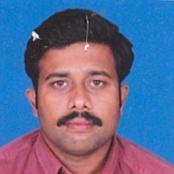International Journal of Image, Graphics and Signal Processing (IJIGSP)
IJIGSP Vol. 6, No. 6, 8 May 2014
Cover page and Table of Contents: PDF (size: 397KB)
Author(s)
Index Terms
Wound healing analysis, SVM classification, Contour evolution, KNN classification, Multispectral imaging, Skin erythema, Wound Image Analysis
Abstract
The aim of the algorithm described in this paper is to segment wound images from the normal and classify them according to the types of the wound. The segmentation of wounds extravagates color representation, which has been followed by an algorithm of grayscale segmentation based on the stack mathematical approach. Accurate classification of wounds and analyzing wound healing process is a critical task for patient care and health cost reduction at hospital. The tissue uniformity and flatness leads to a simplified approach but requires multispectral imaging for enhanced wound delineation. Contour Evolution method which uses multispectral imaging replaces more complex tools such as, SVM supervised classification, as no training step is required. In Contour Evolution, classification can be done by clustering color information, with differential quantization algorithm, the color centroids of small squares taken from segmented part of the wound image in (C1,C2) plane. Where C1, C2 are two chrominance components. Wound healing is identified by measuring the size of the wound through various means like contact and noncontact methods of wound. The wound tissues proportion is also estimated by a qualitative visual assessment based on the red-yellow-black code. Moreover, involving all the spectral response of the tissue and not only RGB components provides a higher discrimination for separating healed epithelial tissue from granulation tissue.
Cite This Paper
K. Sundeep Kumar, B. Eswara Reddy,"Wound Image Analysis Using Contour Evolution", IJIGSP, vol.6, no.6, pp.36-42, 2014. DOI: 10.5815/ijigsp.2014.06.05
Reference
[1]J.A. Clarke, A Colour Atlas of Burn Injuries, London: Chapman & Hall Medical, 1992.
[2]C. Serrano, L. Roa and B. Acha, "Evaluation of a telemedicine platform in a burn unit", in Proc. IEEE Int. Conf. on Information Technology Applications in Biomedicine, 1998, pp. 121-126.
[3]L.Roa, T.Gómez-Cía, B.Acha and C.Serrano, "Digital Imaging in Remote Diagnosis of Burns", Burns, vol. 25, no. 7, Nov. 1999, pp. 617-624.
[4]W. P. Berriss, S. J. Sangwine, "Automatic Quantitative Analysis of Healing Skin Wounds using Colour Digital Image Processing", www.smtl.co.uk/World-Wide Wounds/1997/July/Berris/Berris.html#perednia1, 1997.
[5]M.Herbin, F.X. Bon, A. Venot, F. Jeanlouis, M.L. Dubertret, L. Dubertret, G. Strauch, "Assessment of Healing Kinetics through True Color Image Processing", IEEE Trans. on Medical Imaging, vol.12, no.1, 1993.
[6]M.Herbin, A. Venot, J.Y. Devaux, C. Piette, "Color quantitation through image processing in skin", IEEE Trans. on Medical Imaging, vol. 9, no.3, 1990.
[7]J. Arnqvist, L.Hellgren, J. Vincent, "Semiautomatic classification of secondary healing ulcers in multispectral images", in Proc. of 9th International Conference on Pattern Recognition, pp. 459-461, Rome (Italy), Nov. 1988.
[8]R. A. Fiorini, M. Crivellini, G. Codagnone, G. F. Dacquino, G. Libertini, A. Morresi, "DELM Image Processing for Skin-Melanoma early Diagnosis", Proc. SPIE – Int. Soc. Opt. Eng, vol. 3164, pp. 359-370, 1997.
[9]J. P. Thira, B. Macq, "Morphological Feature Extraction for the Classification of Digital Images of Cancerous Tissues", IEEE Trans. on Biomedical Engineering, vol. 43, no. 10, pp. 1011-1020, Oct. 1996.
[10]G. A. Hance, S. E. Umbaugh, R. H. Moss, W. V. Stoecker, "Unsupervissed Color Image Segmentation with Application to Skin Tumor Borders", IEEE Engineering in Medicine and Biology, pp. 104-111, Jan/Feb 1996.
[11]F. J. Wyllie, A. B. Sutherland, "Measurement of Surface Temperature as an Aid to the Diagnosis of Burn Depth", Burns, vol. 17, no. 2, pp. 123-127, 1991.
[12]R. P. Cole, S. G. Jones, P. G. Shakespeare, "Thermographic Assessment of Hand Burns", Burns , vol. 16, no. 1, pp. 60-63, 1990.
[13]R. E. Barsley, M. H. West, J. A. Fair, "Forensic Photography. Ultraviolet Imaging of Wounds on Skin", American Journal of Forensic Medical Pathology, vol. 11, no. 4, pp. 300-308, Dec. 1990.
[14]J. E. Bennett, R. O. Kingman, "Evaluation of Burn Depth by the Use of Radioactive Isotopes – An Experimental Study", Plastic and Reconstructive Surgery, vol. 20, no. 4, pp. 261-272, 1957.
[15]Z. B. M. Niazi, T. J. H. Essex, R. Papini, D. Scott, N. R. McLean, J. M. Black, "New Laser Doppler Scanner, a Valuable Adjunct in Burn Depth Assessment", Burns , vol. 19, no. 6, pp. 485-489, 1993.
[16]G. L. Hansen, E. M. Sparrow, J.Y. Kokate, K. J. Leland, P. A. Iaizzo, "Wound Status Evaluation using Color Image Processing", Trns. on Medical Imaging, vol. 16, no. 1, pp. 78-86, Feb. 1997.
[17]J. Liu, K. Bowyer, D. Goldgof, S. Sarkar, "A Comparative Study of Textures Measures for Human Skin Treatment", Proc. of Int. Conf. on Information, Communications and Signal Processing ICICS'97, pp. 170- 174, Singapur, 1997.
[18]L.M. Lifshitz, S.M. Pizer, "A Multiresolution Hierarchical Approach to Image Segmentation Based on Intensity Extrema", IEEE Trans. on Pattern Analysis and Machine Intelligence, vol. 12, no. 6, 1990, pp. 529-539.
[19]J.J. Koenderink, "The structure of images," Biol. Cybern., 1984, 50, pp. 363-370.
[20]C.Serrano, D.Santos, B.Acha, "Multiresolution Color Segmentation Algorithm with Application to Medical Images", Int. Conf. Signal and Image Processing, Nov. 2000, Las Vegas (USA), pp. 411-415.
[21]G. Wyszecki and W.S. Stiles, Color Science: Concepts and Methods, Quantitative Data and Formulae (New York: Wiley, 1982).
[22]Linde, Y. and Buzo, A. and Gray, R.M, "An algorithm for vector quantizer design", IEEE Trans. On Communications, vol.28, no. 1, pp. 84-95, 1980.

